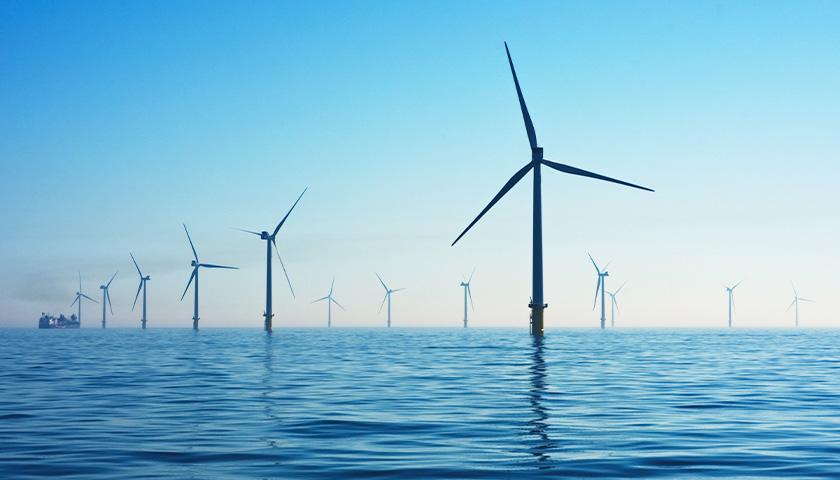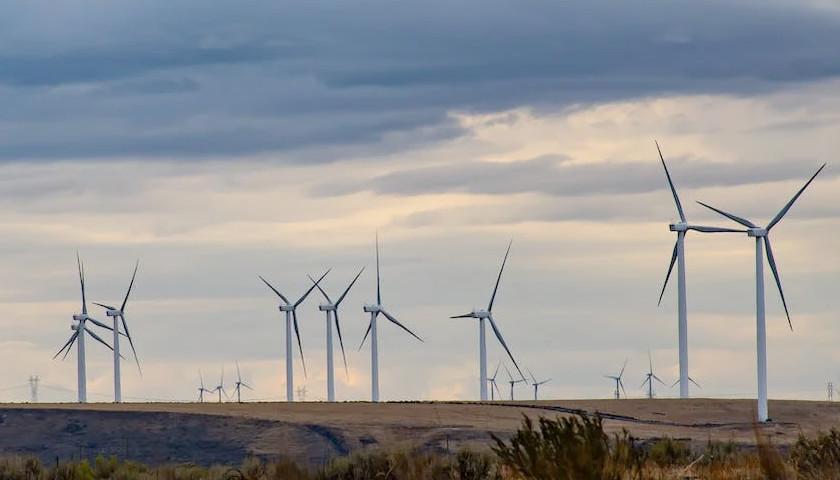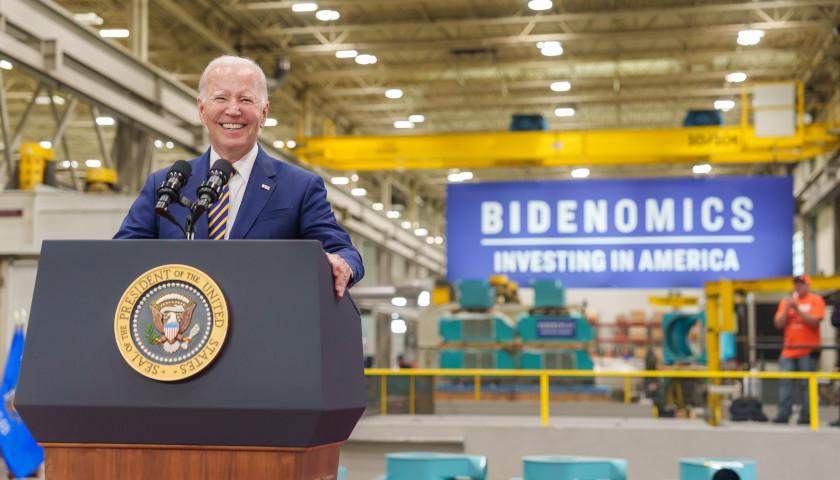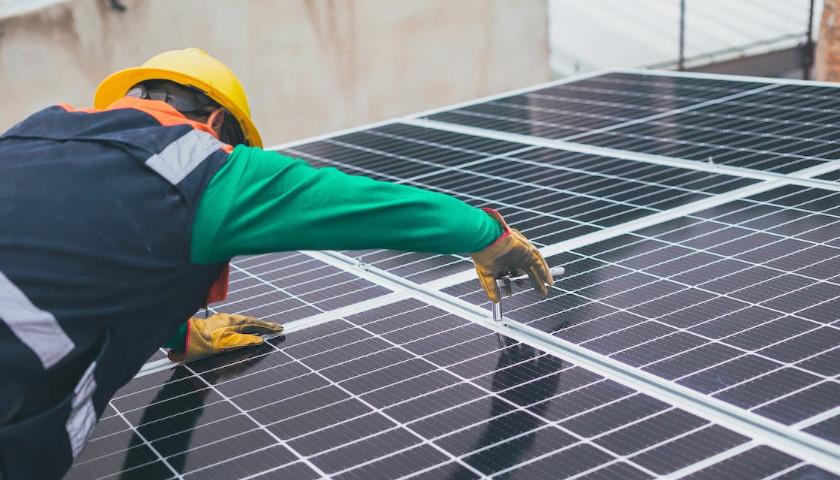by John Hugh DeMastri
The federally-chartered regulator responsible for managing fisheries in the oceans of New England acknowledged that offshore wind farms could pose a threat to the local marine wildlife, according to a letter obtained by the Daily Caller News Foundation.
Thomas Nies, executive director of the New England Fishery Management Council (NEFMC), noted the “concerning implications” of a study by researchers from the Norwegian Institute of Marine Research, which found that the high voltage direct current (HVDC) power cables used by some offshore wind farms emitted magnetic fields that could hinder the ability of haddock larvae to navigate, according to a January 18 letter obtained by the DCNF. The negative impact on both the haddocks’ speed and ability to navigate could result in increased “predation” of affected fish.
Offshore wind farms typically utilize one of two cables to transport power back to shore, known as high voltage alternating current (HVAC) and HVDC, with the former preferred for short-range projects within roughly 30 miles of shore and the latter preferred for more long-range projects, according to the U.S. Department of the Interior. Multiple recent studies have demonstrated that a variety of commercially popular fish can be negatively impacted by their exposure to magnetic fields emitted by HVDCs, which can confuse their ability to navigate and in some cases leave them exposed to predators.
 Captain Jerry Leeman, who heads the fishing vessel Teresa Marie IV, sent a copy of the Norwegian haddock study to Nies in a January 9 letter. Noting the similarities between cod and haddock, he expressed concern that any proposed offshore wind projects off the Gulf of Maine would require cables to be routed through cod spawning grounds, which could expose them to predators and fishers alike, depleting the population.
Captain Jerry Leeman, who heads the fishing vessel Teresa Marie IV, sent a copy of the Norwegian haddock study to Nies in a January 9 letter. Noting the similarities between cod and haddock, he expressed concern that any proposed offshore wind projects off the Gulf of Maine would require cables to be routed through cod spawning grounds, which could expose them to predators and fishers alike, depleting the population.
“Thank you for your January 9 letter … . We were previously aware of this study and agree that it has concerning implications for the possible effects of high voltage direct current cabling on larval behavior and resulting predation rates,” Nies said in a January 18 letter. “While most projects off the Atlantic coast are planning for alternative current transmission cables, this is not uniformly the case, and we are uncertain about the types of cables that might be used for projects in the Gulf of Maine.”
The NEFMC is a federally-chartered group responsible for “conserving and managing fishery resources” off the coasts of Connecticut, Maine, Massachusetts, New Hampshire and Rhode Island, according to its website. The council has 18 voting members, one of which is the regional administrator of National Oceanic and Atmospheric Administration (NOAA) Fisheries, a federal agency responsible for ocean conservation nationwide, and the remainder of which are state officials or appointees confirmed by the Secretary of the U.S. Department of Commerce.
“To be clear, we do not manage all activities in the Gulf of Maine – we manage many fisheries in the Gulf of Maine. The Council does not have a formal role in offshore wind permitting or regulation,” Nies said in a statement to the DCNF, noting that the regulator could only make definitive statements about approved projects. “We do comment to BOEM on wind projects to indicate our concerns as they relate to resources under our jurisdiction, based on our expertise in fisheries science and management.”
The NEFMC’s Submarine Cables Policy, which manages the cables that take offshore wind power to land, explicitly recommends an “early and often” approach to consultation with federal and state agencies to “ensure” that New England cable projects are constructed in a sustainable manner. While there is no explicit mention of high voltage cables, the policy forbids cables being placed “to the extent possible… in sensitive and important fish habitats,” such as spawning grounds.
“The Council has not taken a position on the relative environmental effects of HVAC and HVDC cables,” Nies said in a statement, referring the DCNF to the agency’s Submarine Cables Policy. “Our policy focuses primarily on careful cable routing and burial, as well as appropriate monitoring and communication.”
While there are currently no active offshore wind projects in Maine, the state government received approval in January to move forward with a grant to deploy a dozen floating offshore wind turbines, according to the Bureau of Ocean Management (BOEM). The BOEM is also currently heading a series of meetings to gauge private interest in offshore wind projects in the region, and the state government launched the Maine Offshore Wind Initiative in 2019 to promote the industry in the state.
“At this time, the draft Call Area is very extensive and covers a large area of the Gulf of Maine,” Nies told the DCNF, regarding the potential impact of projects in Maine. “Presumably some of these locations would be best serviced by HVDC cabling given the distances from shore.”
Roughly 16 million pounds of haddock, worth approximately $20 million, were fished commercially in the U.S. in 2021, according to NOAA.
Offshore wind projects have faced scrutiny from some environmental activists recently amid a rash of unexplained deaths of whales and dolphins on the east coast. The Biden administration in late February announced plans to accelerate federal investments in offshore wind projects, even as New Jersey environmentalists criticized the administration for dragging its feet in investigating offshore wind as a potential cause of the unexplained marine deaths.
– – –
John Hugh DeMastri is a reporter at Daily Caller News Foundation.
Photo “Offshore Wind Farm” by Nicholas Doherty.








